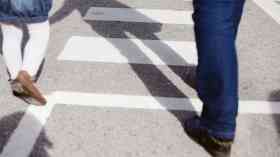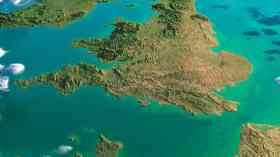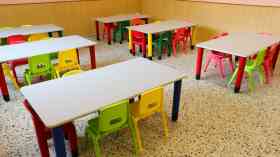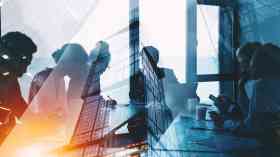Bringing together creativity and literacy
 Creativity is characterised by originality and expressiveness, so it can mean making something or it can be something new and innovative. Sir Ken Robinson has said that “Creativity is about working in a highly focused way on ideas and projects, crafting them into their best forms and making critical judgements along the way.”
Creativity is characterised by originality and expressiveness, so it can mean making something or it can be something new and innovative. Sir Ken Robinson has said that “Creativity is about working in a highly focused way on ideas and projects, crafting them into their best forms and making critical judgements along the way.”
Bringing creativity and literacy together can be a powerful tool in teaching. It allows children to be active in literacy, from acting out plays through characters that they’ve made themselves or through making props. It allows children to explore their imaginations. Getting involved in a story re-enforces the learning and can also teach practical skills, for example, working with templates or basic sewing.
Children are naturally creative, if you stop and listen to them they often are natural storytellers. They love to make things up and will very often have imaginary worlds they will refer to. They also love to get involved in making things, giving them a sense of achievement.
If they are engaged they will learn more, so it’s about harnessing their ability to soak up information and to capture their imaginations, which can make teaching more fulfilling.
Benefits of creative literacy
The benefits are numerous and wide-ranging. It encourages greater pupil engagement, brings a subject to life – therefore capturing pupils interest, and improves knowledge retention. It can also improve oral and listening skills, encourage team building, and can be made practical, suiting those who may struggle with some traditional methods of teaching, eg, children who are dyslexic. Creative literacy can also encourage reluctant readers, build confidence, and help teach practical skills.
Education Scotland Foghlam Alba has shown through its research that creativity in learning encourages pupils to think creatively. They were more open to new ideas and challenges. It gave them a greater ownership over their learning, they became more interested in discovering things for themselves and were more able to solve problems, so
they became more effective learners.
In addition, research carried out by Kimberley Stafford and Myra Barrs for the Centre for Literacy in Primary Education (CLPE) in 2005 also found that linking creativity through arts and literacy was a powerful tool. They found it aided sustained learning as the children made strong connections between reading, writing and their work in creative arts. It enhanced their oral language skills, and a workshop atmosphere promoted concentration and confidence and deepened their understanding so they could reflect on their learning. It also encouraged the children to work as a team.
This approach to learning has famous supporters; Sir Ken is a strong advocate for allowing creativity in education. In an interview, he said students were different and you needed something to engage the whole class. He went on to say: “If they are engaged they will learn.”
Sir Ken believes education is about people and not process, he thinks our education system is currently about conformity which is the opposite of where it should be. Clearly, Michael Gove is not a fan of Sir Ken as he seems to want to go in the opposite direction, which is worrying for our future generations and doesn’t help them to prepare for the future.
Pie Corbett, educationalist and author, is known for his books on teaching creative writing. He also advocates that if you use things such as puppets, role-play and acting out stories, it brings stories to life and makes them more memorable. He believes drama also helps children generate their own story ideas.
A cross-curricular approach
So where does creative literacy fit into the curriculum? Well, in a variety of areas. Research carried out for the CLPE showed that the role of texts brought together reading, writing, crafting and bodily enactment in a holistic way that addressed curriculum demands. Creative literacy resources can also be used to teach geography, history or PSHE. All of these can be brought vividly to life through a creative literacy approach to learning.
A story’s location can be a good way to teach geography, for instance, a pirate tale with a treasure island can be used to teach children about the geography of islands. By creating a model of an island it can be used to create a map. The story could lead to making and using a compass. The location may also help teach about the environment if the story covers a specific area, eg deforestation in Costa Rica.
With the characters of a story, you can teach many PSHE topics by discussing the moral dilemmas or situations the characters find themselves in. Making puppets can lead to discussions or, if it’s something sensitive, a child may talk about it through the puppet.
The time-setting of a story is a useful tool to teach history: a story set in ancient Egypt could also be used as a starting point for how pyramids are constructed, the story of Tutankhamun or how Egyptians used to live.
Natasha Dennis of Little Creative Days can concur with the research carried out to the benefits of using creative literacy resources. Natasha says: “During the testing of our products we have seen how the children have engaged with the learning in the stories. It has brought the subject to life for them. It has built their confidence, particularly the quieter ones.”
Inclusivity and SEN
A further benefit is inclusivity in the classroom. By teaching this way you can ensure that all children feel included. Some children, particularly those with dyslexia, like to learn in a multi-sensory way so bringing subjects to life will suit their style of learning. They will feel less isolated/different from their classmates. They are likely to take hold of the subject and help others to see things differently, thereby enriching the experience for all.
Further information
www.littlecreativedays.co.uk
Latest News
19/12/2025 - 09:54
The Education Committee has expanded its ongoing inquiry into the early years sector to examine how safeguarding can be strengthened in early years settings.
18/12/2025 - 09:25
The UK will be rejoining the Erasmus programme in 2027, following a package of agreements with the EU.
17/12/2025 - 09:31
Ofqual has fined exam board Pearson more than £2 million in total for serious breaches in three separate cases between 2019 and 2023 which collectively affected tens of thousands of students.
16/12/2025 - 09:19
The average funding rates will increase by 4.3% for under 2s, and by almost 5% for 3-and-4-year-olds.
15/12/2025 - 10:30
Local colleges are set to receive £570 million in government funding to expand training facilities in areas such as construction and engineering.







